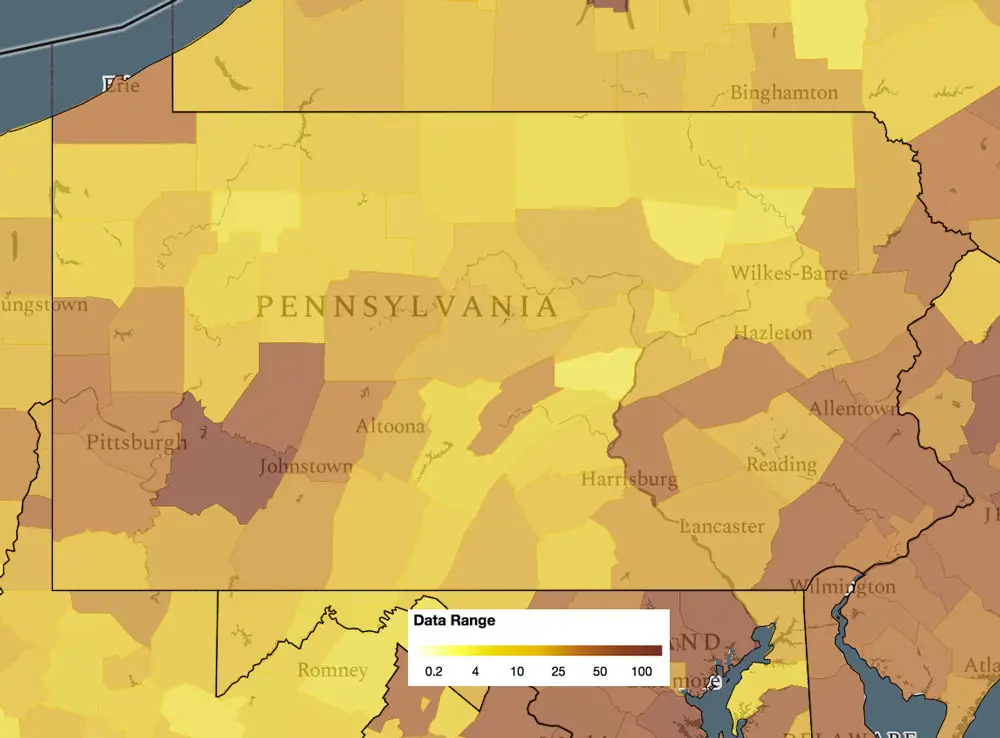 JEFFERSON CO., Pa. (EYT) – A recent Penn State research project gathered data that showed that broadband access is still a major issue in most of Pennsylvania, including our local region.
JEFFERSON CO., Pa. (EYT) – A recent Penn State research project gathered data that showed that broadband access is still a major issue in most of Pennsylvania, including our local region.
The study, which was sponsored by The Center for Rural Pennsylvania, found that every county in the Commonwealth fell below the threshold of 50 percent of the population having access to FCC-defined broadband connectivity.
The official FCC broadband definition is a minimum of 25 Mbps (Megabits per second) download and 3 Mbps upload.
Researchers collected data from over 11 million broadband speed tests from all across the state in 2018, measuring broadband speeds in each county. The tests showed that median speeds across the vast majority of the state do not meet the FCC’s criteria to qualify as broadband.
Locally, the test results looking at median download speeds in our region show that Jefferson County falls along the upper end of the range among local counties, although still far below the FCC broadband threshold, with a median of 7.3325 Mbps. The only local county that had a higher median is Armstrong County, where the median was measured at 7.9805 Mbps.
On the other end of the spectrum, Forest County had the lowest median download speed of 2.5770 Mbps.
In the middle range, Clearfield County, Clarion County, and Indiana County all had similar median download speeds, at 4.3009 Mbps, 4.5292 Mbps, and 4.7106 Mbps respectively, while Elk County’s median was found to be 5.2478 Mbps.
According to the report, findings of this kind were widespread across the state. The study states that although the FCC’s official broadband maps from December 2017 (which were then updated in May 2019) show 100 percent availability across all of Pennsylvania to broadband speeds over 25 Mbps, most areas did not actually meet the FCC’s criteria to qualify as broadband.
It also noted that connectivity speeds are “substantially slower” in rural communities than in urban communities. Specifically, the report states that “the research team found that areas where observed median speeds did meet the FCC’s minimum definition of broadband connectivity were clustered around major metropolitan areas (especially Philadelphia and Pittsburgh), and that outside of a handful of urban cores, almost no areas of the state qualified as having median speeds that met the FCC’s definition for broadband.”
The found that since 2014, “the discrepancy between ISPs’ self-reported broadband availability in the FCC’s broadband maps and this research’s speed test results collected via the M-Lab platform has grown substantially in rural areas, but not in urban areas; this may indicate a growing overstatement of broadband service availability in rural communities.”
“These growing inaccuracies may be leading to a misinformed notion of progress in closing the digital divide, and an increasingly inaccurate overstatement of broadband availability in rural areas. One result may be the lowering of program eligibility for government funding to the very areas where service provision is lacking,” it concluded.
The report goes on to suggest that “in-depth work is recommended to take place in parallel with necessary interventions to address these broadband shortcomings. In particular, increasing the level of granularity of Pennsylvania’s broadband maps and ensuring regular updating of these resources, would enable both more informed (and targeted) policy interventions, and ensure that more communities are eligible for earmarked support to help bridge existing digital divides.”
Copyright © 2024 EYT Media Group, Inc. All rights reserved. Any copying, redistribution or retransmission of the contents of this service without the express written consent of EYT Media Group, Inc. is expressly prohibited.








